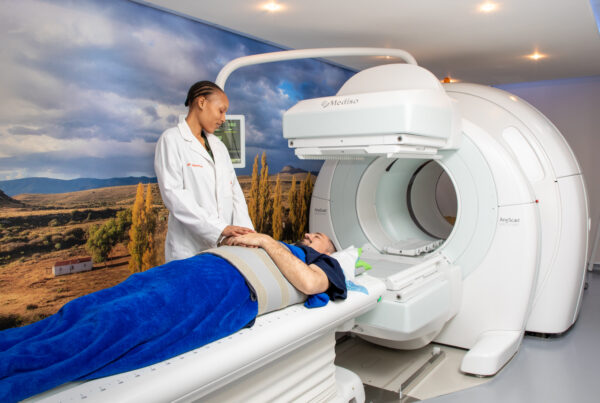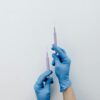As World IBD Day approaches on May 19, medical professionals, patients, and healthcare advocates are raising awareness about Inflammatory Bowel Disease (IBD). It is a group of chronic inflammatory conditions that affects millions worldwide, yet it remains largely misunderstood and often misdiagnosed.
The global impact of IBD
Inflammatory Bowel Disease primarily includes Crohn’s Disease and Ulcerative Colitis – chronic inflammatory conditions impacting the gastrointestinal tract. Global epidemiological data reveals a staggering reality: more than 10 million people worldwide live with IBD, with prevalence rates rising dramatically. Recent studies from the Global IBD Epidemiology Consortium show a 7.2% increase in diagnosed cases between 2020 and 2024, particularly in industrialized nations and emerging economies.
At the 2024 SAGES Congress in Cape Town, it was revealed that in South Africa, the IBD Africa Registry has seen an exponential increase in IBD incidence over the past 50 years. Because the vast majority of patients do not die from autoimmune diseases, this means compounding prevalence results in an ever-increasing number of patients requiring chronic care.
“The rising prevalence of IBD represents both improved diagnostic capabilities and a genuine increase in disease occurrence worldwide,” explains Dr. Thania Kahn, a Cape Town gastroenterologist. “What was once considered rare in many parts of the world is now recognized as a significant global health challenge.”
Beyond the visible: the daily reality of IBD
Living with IBD is far more than a “bathroom disease”. Patients endure a complex, often invisible struggle that impacts every aspect of their lives. Chronic diarrhea requiring sudden and urgent bathroom needs, debilitating pain, and extreme fatigue can interrupt even the most carefully planned days.
Dr. Zozibini Mhlaba, herself a medical doctor and an Ulcerative Colitis patient, shares some of her realities. “I wish people knew how anxious I get about going into public spaces when I have a flare, because I always need to know where the nearest toilet is, and I have to explain to everyone why I require the toilet every 10 minutes. I wish people knew the anxiety that comes with changing medications because I am constantly thinking about when my next flare will be.”
Specialist IBD sister, Sister Karin Davidson of the Cape Town Infusion Centre, emphasizes the psychological toll of IBD on sufferers. “What family, friends, and colleagues often don’t see are the nights spent in pain, the utterly debilitating fatigue, the medications with side effects, and the mental load – the fatigue is also utterly debilitating, yet so many patients suffer in silence and so many say it is the loneliest disease in the world.”
Debunking common myths
Several persistent misconceptions about IBD continue to challenge patient experiences:
MYTH: IBD is caused by diet and can be cured by changing what you eat.
FACT: IBD is an immune-mediated disease involving genetic susceptibility and environmental triggers. In adults, no diet has been proven to cure it, although dietary modifications may help manage symptoms.
MYTH: IBD is the same as IBS (Irritable Bowel Syndrome).
FACT: These are entirely different conditions. IBD involves chronic inflammation and subsequent damage to the gastrointestinal tract, and can lead to serious complications that may require surgery. IBS is a functional disorder without inflammation or tissue damage.
MYTH: IBD is just a bathroom disease.
FACT: It is a systemic inflammatory condition that can affect joints, skin, eyes, and other organ systems beyond the digestive tract.
Symptoms and complications
IBD symptoms vary, but commonly include:
- Persistent diarrhea
- Abdominal pain and cramping
- Blood in stool
- Unintended weight loss
- Extreme fatigue
- Reduced appetite
- Fever during flares
- Joint pain
- Skin issues
- Eye inflammation
Serious complications can include intestinal strictures (narrowing), fistulas, abscesses, malnutrition, and an increased risk of colorectal cancer. Mental health is also significantly impacted, with higher rates of anxiety and depression among patients.
The path to diagnosis and care
“Early and accurate diagnosis and treatment initiation is crucial for controlling inflammation, preventing disease progression and complications,” says Dr. Kahn. Diagnosis typically involves:
- Comprehensive medical history
- Physical examination
- Blood tests
- Stool tests
- Endoscopic procedures i.e., colonoscopy +/- gastroscopy
- Cross-sectional imaging, e.g., CT or MRI scans
Looking forward with hope
While IBD remains a serious, chronic condition without a definitive cure, treatment options continue to improve. “Living with this disease today is fundamentally different from it was 20 years ago,” notes Dr. Kahn. “With modern treatments, most of our patients lead full, productive lives – they are able to do things that might have seemed impossible for previous generations of IBD patients.”
This World IBD Day, healthcare advocates stress the importance of public understanding and support. “Compassion starts with education,” says Sister Davidson. “When more people understand that IBD isn’t a diet or lifestyle choice – or something people can just ‘get over’ – it creates space for genuine support rather than judgment or dismissal.”
Bottom line
While living with this disease can be a challenge, early intervention and appropriate treatment can significantly improve outcomes and quality of life. This World IBD Day, people who are experiencing persistent digestive symptoms are encouraged to seek medical evaluation with professionals versed in the field of gastroenterology.



![women [longevity live]](https://longevitylive.com/wp-content/uploads/2020/01/photo-of-women-walking-down-the-street-1116984-100x100.jpg)










